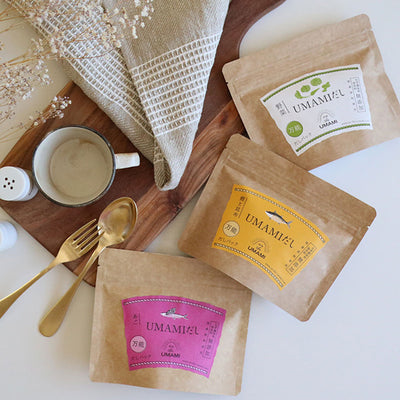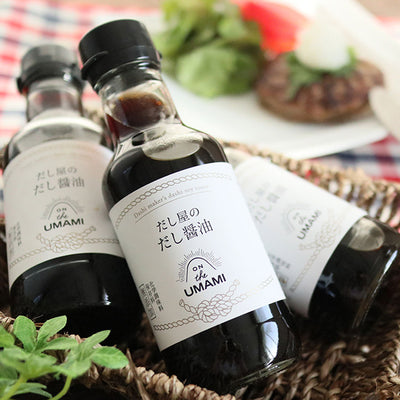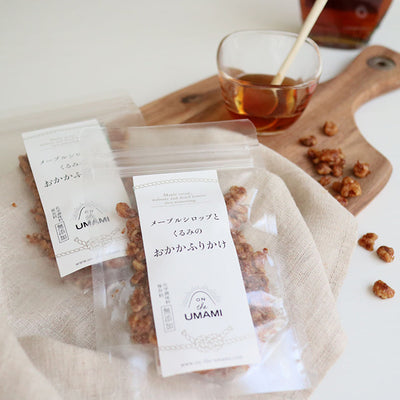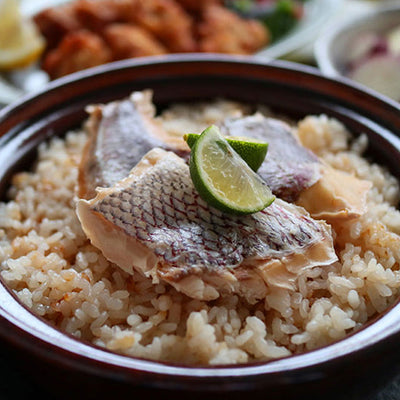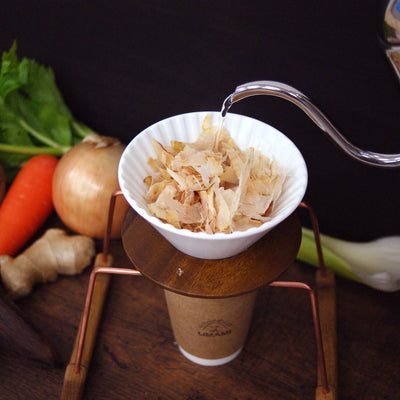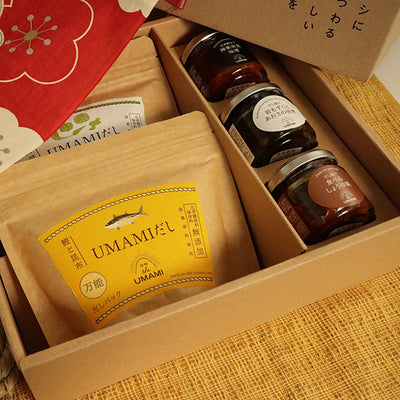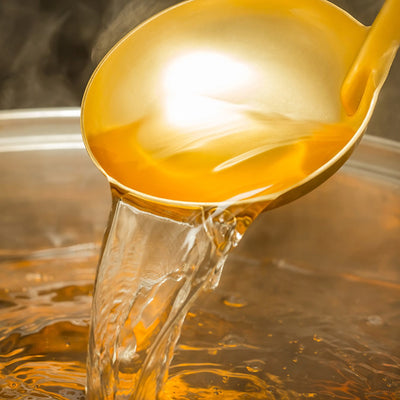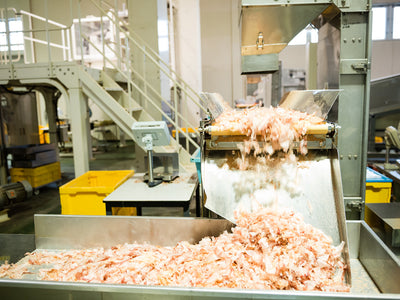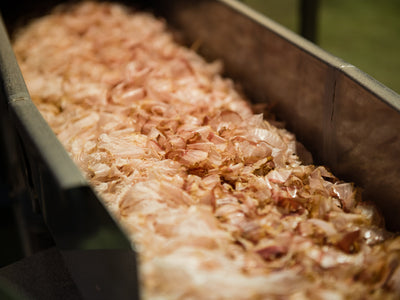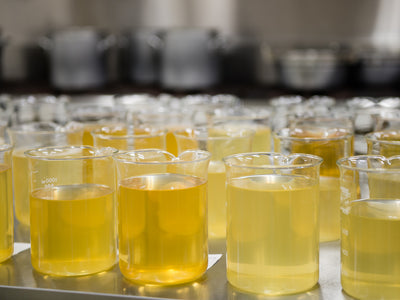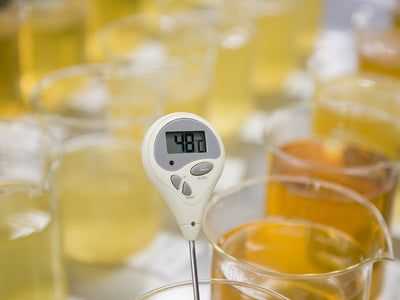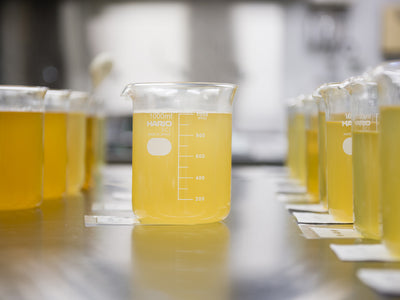Futaba’s Dashi Factory Tour – The Craftsmanship Behind Japanese UMAMI
This video introduces the production site of Futaba Co., Ltd., the maker of ON THE UMAMI. While the ON THE UMAMI brand focuses on retail and international markets, this tour reveals the broader dashi-making expertise behind the brand.
Dashi is the foundation of Japanese cuisine.
In Japan, dashi is carefully prepared using high-quality ingredients such as bonito and kombu. These ingredients are simmered to extract their rich umami, resulting in a clear yet deeply flavorful broth.
Dashi brings out the hidden flavors of other ingredients, enhancing the overall taste of a dish. Even with minimal seasoning, a well-made dashi adds depth and complexity, creating a truly satisfying culinary experience.
The Essentials: 6 Popular Types of Japanese Dashi
|
Bonito (Katsuo) |
Katsuobushi, made from dried and fermented bonito, has a bold, rich umami flavor and imparts a distinctive aroma. It adds depth and complexity to a wide range of dishes. |
|
Tuna (Maguro) |
Tuna-based dashi has a more delicate and slightly sweet flavor compared to bonito. Its light, refined taste enhances dishes without overpowering the original ingredients. |
|
Mackerel (Saba) |
Mackerel dashi delivers a strong umami with a pronounced aroma. It is commonly used in simmered dishes and makes a flavorful base for various broths. |
|
Sardine (Iwashi) |
Sardine-based dashi has a robust umami and a characteristic aroma from the natural oils of the fish, along with subtle bitterness and astringency. It creates a hearty, deeply flavorful broth. |
|
Flying Fish (Ago) |
Ago dashi, made from dried flying fish, is known for its elegant and refreshing sweetness, balanced with a deep, savory flavor. It is prized for its clean taste and rich umami. |
|
Kombu (Kelp) |
Kombu is a type of seaweed that produces a fragrant, gentle umami. Its mild and slightly sweet flavor provides a smooth, savory base in many Japanese dishes. |
Dashi serves as the foundation of taste, or umami, in Japanese cuisine.
Without dashi, a dish lacks depth and richness in flavor. Among the many types of dashi, bonito and kelp are particularly valued for the quality of their broth and their versatility with a wide variety of ingredients.
Let’s take miso soup as an example—a well-known Japanese dish.
Common ingredients in miso soup include:
・Miso (soy bean paste)
・Tofu (soy bean curd)
・Wakame (seaweed)
・Green Onion
Each of these ingredients has its own distinct taste and aroma.
If you make miso soup using only water, you’ll notice the flavors of each ingredient remain separate in your mouth. However, when you use dashi, it brings all the flavors together and creates a deeper, unified taste.
By simply replacing water with dashi, even a simple dish like miso soup is elevated in flavor and quality.
Kezuribushi / Dried Fish Flakes
To use fish for making soup stock, the fish is dried and then shaved into flakes. The thickness of the flakes varies depending on the intended use.
|
Thin Flakes Thin flakes are known as Hanakezuri or flowery flake because the flake look like flower petals. Thin flakes give us very clear and flavory DASHI soup that is necessary in Japanese cuisine. Very first DASHI soup made from thin flake are called "ICHIBAN DASHI" and used for kind of dishes emphasis rich flavor or aroma.
|
|
|
Thick Flakes Thick flake give us very strong DASHI that has impact in taste. A famous dish is a dipping sauce of Soba (buckwheat) noodles. Buckwheat have characteristic flavor and it requires very strong sauce to go with it. DASHI soup to mix with the sauce have to be strong as well to keep the flavor without erased by sauce.
|
As mentioned above, bonito and kelp are essential ingredients for making dashi in Japanese cuisine.
Each of them creates a high-quality broth on its own, but when combined, their umami flavors are said to multiply due to a synergistic effect.
This effect has a scientific basis:
Bonito flakes are rich in inosinic acid, while kelp contains a large amount of glutamic acid.
When these two types of umami compounds are combined, they stimulate the taste receptors in the mouth more strongly than either would alone, resulting in a deeper, more complex flavor.
This mixed dashi—called "Awase Dashi" in Japanese—is considered the foundation of traditional Japanese cooking.
It is widely used in dishes such as miso soup, simmered vegetables (Nimono), chawanmushi (savory egg custard), and clear soups (Osuimono).
Even simple dishes become rich and satisfying with Awase Dashi as their base.
Alternative Forms of DASHI: Powder, Packet, and Liquid
|
Powdered DASHI |
|
|
|
|
|
|


